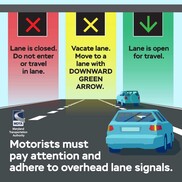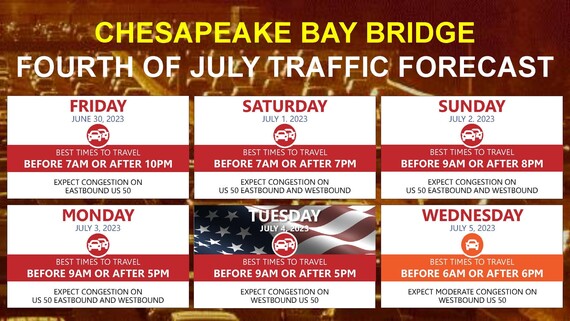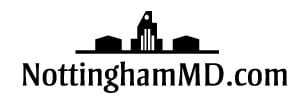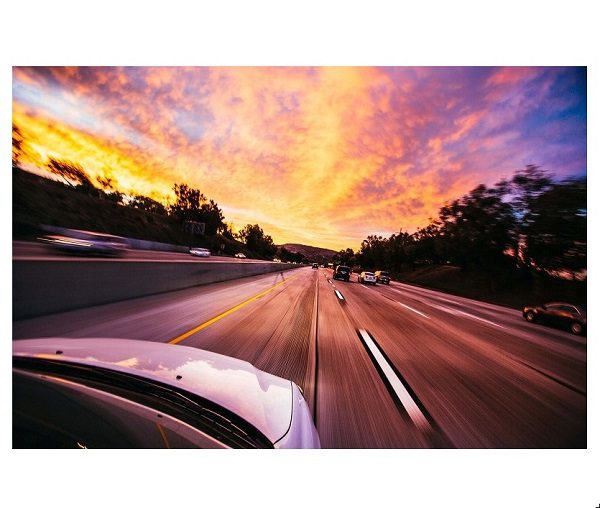BALTIMORE, MD—With a record number of travelers expected this holiday weekend, state officials have released the Chesapeake Bay Bridge travel forecast for Independence Day.
Motorists should expect heavy traffic at the Bay Bridge and along the US 50 corridor Friday, June 30, through Wednesday, July 5, in both directions. The best times to travel across the Bay Bridge this holiday period will be off-peak, including:
- Friday, June 30 – before 7 a.m. and after 10 p.m.
- Saturday, July 1 – before 7 a.m. and after 7 pm
- Sunday, July 2 – before 9 a.m. and after 8 pm
- Monday, July 3 – before 9 a.m. and after 5 p.m.
- Tuesday, July 4 – before 9 a.m. and after 5 p.m.
- Wednesday, July 5 – before 6 a.m. and after 6 p.m.
Stretches of concurrent eastbound and westbound delays are anticipated over the holiday period. Recent post-pandemic Fourth of July holiday periods have experienced nearly 12-mile delays westbound and nearly 5-mile delays eastbound. Weather and traffic permitting, two-way operations will be implemented to help alleviate eastbound delays at the Bay Bridge. Two-way operations may be limited based on westbound traffic volumes, as bridge officials strive to mitigate delays on both sides of the bridge. Two-way operations are prohibited during bridge wind warnings/restrictions, fog/limited visibility or times of precipitation, and may be prohibited during incidents.
Motorists may also find time savings by utilizing the I-95 northern route traveling the Tydings Bridge to and from the Eastern Shore.
Travelers are reminded that the Bay Bridge Automated Lane Closure System is active on both sides of the bridge.
The Automated Lane Closure System uses overhead lane-use control signals and full-color dynamic message signs, horizontal swing gates and illuminated pavement markers to alert and guide motorists when lanes are opening and closing to accommodate traffic operations. Motorists are reminded to pay attention and adhere to overhead lane signals.
 Lane signals apply to travel lanes BEFORE, ON and AFTER the bridge wherever lane signals are present.
Lane signals apply to travel lanes BEFORE, ON and AFTER the bridge wherever lane signals are present.
- RED X: Means the lane is closed. You MUST NOT enter or travel in any lane over which a RED X signal is shown.
- YELLOW X: Prepare to vacate the lane beneath the YELLOW X signal and move to a lane with a
- DOWNWARD GREEN ARROW.
- DOWNWARD GREEN ARROW: Motorists can drive in the lane beneath the GREEN ARROW signal.
Police enforcement is continuing for motorists failing to obey the lane-use control signals on the highway approaches and on the bridge.
More in the forecast graphic below.

Photo by Taras Makarenko from Pexels

